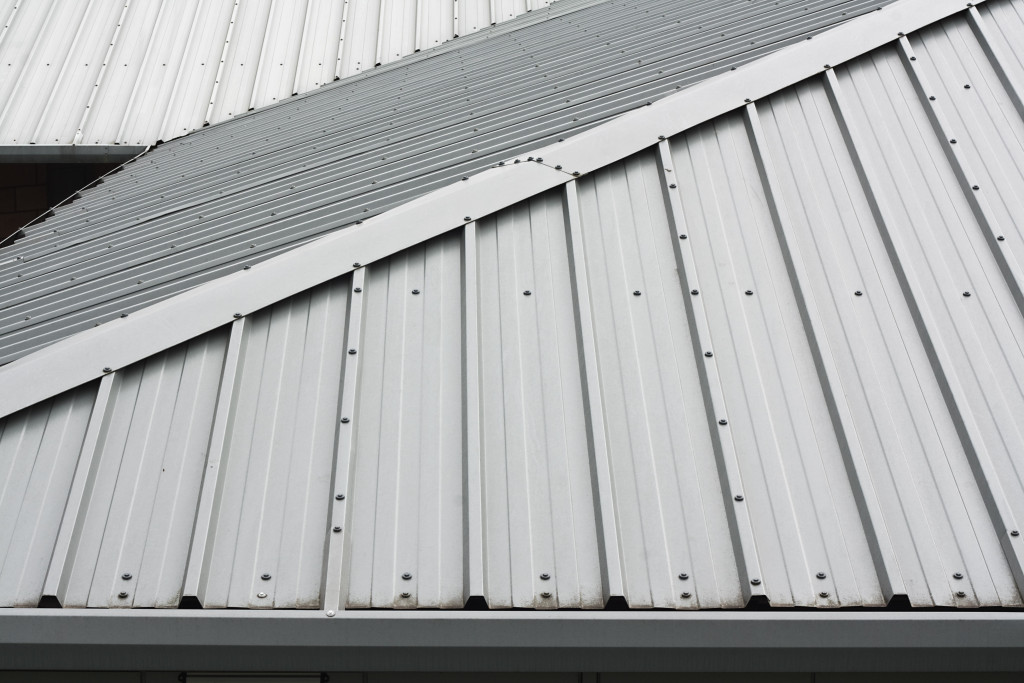Historically, flat roofs have been used in many arid and dry regions in the middle east. That isn’t a surprise, since it rarely rains or snows in these regions. A flat roof means there’s more space that can be used as a living space. The idea of a pitched roof doesn’t seem so practical in these regions unless there’s a decent amount of rain.
But if you’ve driven around different business districts across different cities, you’ll notice one thing about business buildings: they usually have flat rooftops. Even when you’re in remote towns, many commercial places will have flat roofs. Why is that? Well, there are a lot of reasons why businesses would choose a flat roof rather than a pitched one.
No worries, we’ll be answering any uncertainties that you might have on roof design and why most building owners would choose these designs.
Pitched Roofs vs. Flat Roofs
Both flat rooftops and gable-shaped roofing will offer their unique advantages. We’ll be making a comprehensive comparison of the benefits of both roof designs and how they perform in a commercial setting.
Pitched Roofs
More durable and long-lasting — Gable-shaped roofs are known for having a longer lifespan than flat roofs. However, it’s still important to note that your roof’s lifespan will be determined by the material that’s used. For instance, asphalt shingles, one of the cheapest roofing material in the market, is known for having a lifespan of 20 to 25 years while slate tile roofing will have a lifespan of 80 to 100 years.
Maintenance — When it comes to maintaining your building, maintenance can still be done on pitched roofs, but it can prove to be a challenge. Not only will roofers face hazards, such as steep slopes and slippery surfaces, you might also need to do some extra handiwork in ensuring that your seams and other structures on your roof are water-proof. Even then, a pitched roof is still good enough for ventilation systems with home air purification.
Hefty Price Tag — This is especially true to roofing materials that have high quality. Let’s say that you’re setting up a pitched roof for a 900 square feet building; you’ll have to spend around $7,800 to $9,800, depending on the quality and materials used, while you will only need to spend approximately $6,100 to $7,600 for the same size of roofing. In addition to these, you will also have to pay thousands more on repairs and replacements if ever your roof will incur damage.
Flat Roofs
Easier maintenance — Flat roofs can also help with the upkeep of your building. HVAC systems are usually placed on top of flat rooftops since most are out of reach of the public, and maintenance personnel can easily fix or interact with your systems.
Scalability — Your business isn’t going to stay small for long. It is everyone’s dream to see their business grow into a large burgeoning company that you won’t have to manage anymore. If you have plans on placing up a new wing or floor for our building, it’s as easy as constructing another building without having to think of your roof’s design.
Living Space — Most business owners want to closely monitor their business without having to travel miles to get to their business. Having a flat roof can free up opportunities for a penthouse, or a rooftop garden.
Cost-effective — Compared to pitched roofs, flat roofs are considerably cheaper for each square foot that you have to install. By saving up thousands of dollars, you will be able to effectively maintain different aspects of your building and the annual maintenance costs of your roof.
Flat Roof Building Materials

You will also need to be mindful of the type of roofing material that they are planning on using. If you’re keen on fire prevention and increasing your building’s overall aesthetic from nearby commercial spaces, you might want to choose BUR (built-up roofing).
Bitumen roofing is an excellent way of cooling your building since it can be coated with lighter-colored materials. That makes a good option for reflecting off heat, which can lower your energy costs.
If you’re looking for a sturdy option for your building, you might want to consider using a rubber membrane. This material is quite useful if used for buildings that are situated in hurricane-prone areas.
Overall, flat roofs will come out on top if you are choosing function and pragmatism. Since business is always growing, adapting, and scaling, it’s always logical to have a building ready to adjust to the growing needs of your industry while also serving as extra space for your HVAC systems.
The flat roof seems like the correct answer to all your logistic problems, right? Well, it might be the right answer, but that doesn’t mean that pitched roofs also does not have its use.





